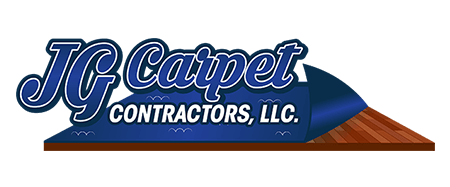
Vinyl plank flooring is a popular choice for homes and businesses due to its durability, affordability, and stylish appearance. However, knowing how to clean vinyl plank floors is essential to maintain their beauty and extend their lifespan. Unlike hardwood, vinyl plank flooring is water-resistant and low-maintenance. However, using the wrong cleaning methods can cause damage over time. This guide will cover the best cleaning practices, common mistakes to avoid, and expert tips to keep your vinyl floors in top condition.
Essential Tips on How to Clean Vinyl Plank Floors
1. Regular Sweeping to Prevent Scratches
Dirt, dust, and small debris can cause tiny scratches on vinyl flooring over time. To avoid this, sweep your floors daily or at least a few times a week using:
- A soft-bristle broom
- A microfiber dust mop
- A vacuum with a hard floor setting
Tip: Avoid using a beater bar attachment on vacuums, as it can scratch the surface.
2. Deep Cleaning With a Mop
Sweeping helps remove dry dirt, but mopping is essential for deeper cleaning. Here’s how to do it properly:
- Use a damp microfiber mop (not soaking wet).
- Mix a pH-neutral vinyl floor cleaner with warm water.
- Mop in sections and dry the floor immediately with a clean cloth.
Avoid: Steam mops, as they can damage the adhesive and warp vinyl planks over time.
3. Avoiding Harsh Chemicals
Using the wrong cleaners can strip the protective finish and make vinyl floors look worn out. Do NOT use:
- Bleach
- Ammonia-based cleaners
- Abrasive powders
- Wax-based polishes
Instead, use mild dish soap and warm water or a vinyl-specific cleaner for stubborn stains.
4. Immediate Spill Cleanup to Prevent Stains
Vinyl floors are water-resistant, but excessive moisture can still cause issues. To prevent stains or warping, always:
- Wipe up spills immediately with a clean, dry cloth.
- Avoid leaving standing water for long periods.
- Use a gentle cleaner for sticky spills like juice or oil.
Tip: If you have kids or pets, keeping a microfiber cloth handy can help with quick cleanups.
5. Using Protective Pads and Rugs
Furniture and heavy appliances can leave dents or scratches on vinyl flooring. To protect your floors, use:
- Felt pads under furniture legs
- Rubber-backed rugs in high-traffic areas
- Doormats at entrances to reduce dirt and debris
6. Limiting Direct Sunlight to Prevent Fading
Too much sun exposure can cause vinyl planks to fade over time. Protect your floors by:
- Using curtains or blinds during peak sunlight hours.
- Placing UV-resistant window film on windows.
- Rotating furniture occasionally to even out sun exposure.
7. Avoiding Heavy Loads and Dragging Furniture
Vinyl plank flooring is strong, but excessive weight can cause indentations.
- Always lift heavy furniture instead of dragging it.
- Use furniture sliders when moving large items.
- Avoid placing extremely heavy appliances directly on vinyl planks.
8. Mind Your Shoes to Reduce Damage
Certain shoes can bring in dirt, rocks, or sharp debris that may scratch vinyl flooring. Consider:
- Having a no-shoes policy inside the home.
- Using soft-soled or indoor shoes on vinyl floors.
- Placing a shoe rack near the entrance to encourage guests to remove their shoes.
9. Routine Maintenance for Long-Lasting Shine
The best way to keep your floors looking new is to set a regular cleaning schedule:
- Daily: Light sweeping or dust mopping
- Weekly: Damp mopping with a vinyl-safe cleaner
- Monthly: Checking for scratches, dents, or wear
- Seasonally: Rearranging furniture to prevent dents and even out wear
Is It Safe to Clean Vinyl Plank Flooring With Vinegar?
Yes, but only if diluted properly. White vinegar is a great natural cleaner that helps remove grime, but it’s acidic and should never be used at full strength.
How to Safely Use Vinegar on Vinyl Plank Flooring:
- Mix one cup of white vinegar with one gallon of warm water.
- Dampen a microfiber mop, making sure it’s not too wet.
- Mop in sections and let the floor air dry or wipe it with a clean, dry towel.
What to Avoid:
- Using undiluted vinegar – It can break down the floor’s protective layer.
- Mixing vinegar with ammonia or bleach – This can cause fading or discoloration.
- Overusing vinegar – Occasional use is fine, but too much can make the floor appear dull.
Common Mistakes to Avoid When Cleaning Vinyl Floors
- Using too much water – Excess moisture can seep into plank edges.
- Scrubbing with steel wool or hard brushes – This can cause scratches.
- Applying wax or polish – Most vinyl floors don’t require waxing and can become slippery.
- Ignoring the manufacturer’s recommendations – Always check specific care guidelines for your vinyl flooring.
FAQs About Cleaning Vinyl Plank Floors

What is the best mop for vinyl floors? A microfiber mop is ideal because it cleans efficiently without leaving streaks. Can I use Swiffer on vinyl plank flooring? Yes, Swiffer WetJet (with a vinyl-safe cleaning solution) is a great option for easy cleaning. What should I do if my vinyl floors look dull? Try cleaning with a vinegar solution or using a vinyl floor restorer to bring back the shine.
Get Expert Flooring Services
Taking proper care of your vinyl plank flooring doesn’t have to be complicated. By following these simple cleaning and maintenance tips, you can keep your floors looking brand new for years. Whether you DIY or hire a professional, using the right methods makes all the difference. If you need expert flooring services, we’re here to help.
- Residential and commercial services
- Licensed professionals
- Free estimates
- Call us at (443) 652-2972
Contact us today for quality flooring solutions!
